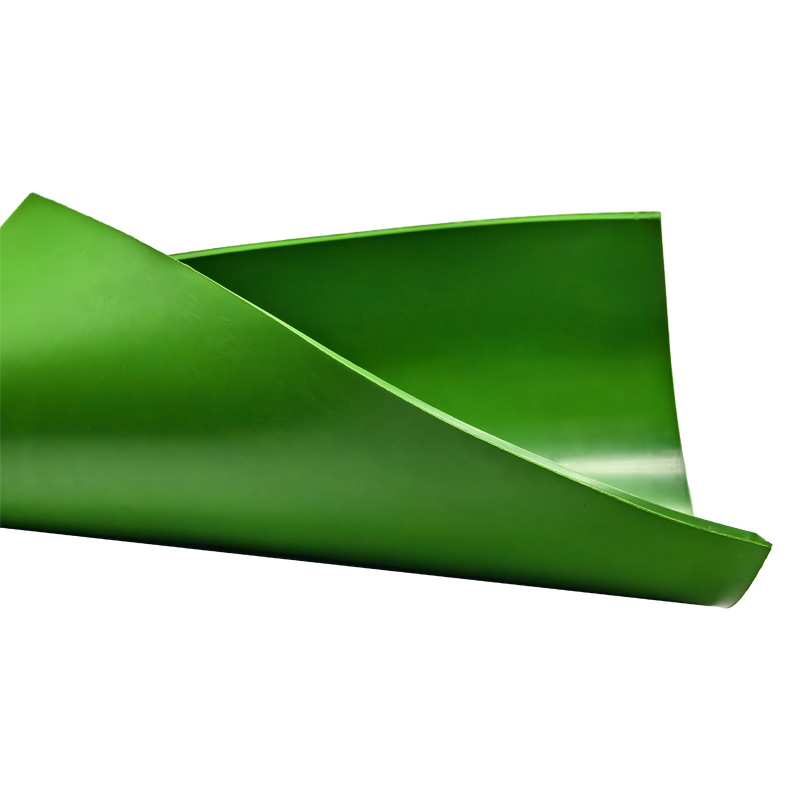What is NBR?
2024-05-23
Nitrile rubber (NBR) is a copolymer made of acrylonitrile and butadiene monomers. It is mainly produced by low-temperature emulsion polymerization. It has excellent oil resistance, high wear resistance, good heat resistance, and good adhesion. Strong relay. Its disadvantages are poor low temperature resistance, poor ozone resistance, poor insulation performance, and slightly lower elasticity.
Nitrile rubber is mainly used to make oil-resistant rubber products. There are five types of acrylonitrile content (%) in nitrile rubber: 42 to 46, 36 to 41, 31 to 35, 25 to 30, and 18 to 24. The higher the acrylonitrile content, the better the oil resistance, but the cold resistance decreases accordingly. It can be used for a long time in air at 120℃ or in oil at 150℃. In addition, it has good water resistance, air tightness and excellent bonding properties. It is widely used in the production of various oil-resistant rubber products, various oil-resistant gaskets, gaskets, sleeves, flexible packaging, soft hoses, printing and dyeing rubber rollers, cable rubber materials, etc. It has become indispensable in the automobile, aviation, petroleum, copying and other industries. elastic material.
NBR has excellent oil resistance. The trans form accounts for about 78% of the typical NBR structure. Since NBR contains cyano groups in its molecular chain structure, its oil resistance (such as resistance to mineral oil, liquid fuel, animal and vegetable oils and solvents) is better than that of natural rubber, chloroprene rubber and styrene-butadiene rubber. Compared with other rubbers, NBR has a wider range of use temperatures. Its long-term use temperature is 120°C. At the same time, NBR has good low-temperature resistance, and the lowest glass transition temperature can reach -55°C. NBR has good chemical resistance and stability and good processing performance. As the acrylonitrile content in its structure increases, its relative density increases, the vulcanization speed accelerates, and the tensile strength performance improves, but the resilience performance decreases and the cold resistance becomes worse. Since the cyano group in NBR is easily polarized by an electric field, its dielectric properties decrease and it is a semiconductor rubber. NBR can be divided into five categories according to the level of ACN content: ultra-high, high, medium-high, medium and low acrylonitrile. There are two production methods: continuous and batch polymerization. The continuous polymerization method is usually used for small-variety and large-volume production with low consumption. The batch polymerization method is suitable for multi-variety and small batch production, and the engineering construction consumption is high. Although nitrile rubber has excellent physical and mechanical properties and processing properties, its long-term performance in sour gasoline and high temperature (150°C) environments is not as good as that of fluorine rubber and acrylate rubber. For this reason, hydrogenated nitrile rubber with excellent performance was developed ( HNBR). In addition, nitrile rubber and carboxyl nitrile rubber (XNBR) with extreme cold resistance and high purity have also been developed.
Because of its excellent oil resistance and physical and mechanical properties, NBR is widely used in the manufacture of various oil-resistant rubber products, such as O-rings, gaskets, hoses and fuel tank linings, printing rollers, oil tank linings, insulating floor boards, oil-resistant Shoe soles, hard rubber parts, fabric coatings, pipe thread protective layers, pump impellers, wire sheaths, adhesives, food packaging films, rubber gloves and other fields. In 2014, there were more than 30 countries producing NBR in the world. The largest consumption area was the production of oil-resistant hose products and flame-retardant conveyor belts, accounting for approximately 53% of the total NBR consumption. Using nylon interlayer and chlorobutyl rubber as the inner and outer layers, a new type of hose can be produced that can prevent Freon gas from seeping out. A car made of HNBR as the inner glue, nylon 66 as the reinforcing layer, and CSM as the outer layer. It has good power steering and can withstand 4 million pulses at 12°C. In addition, nitrile rubber is also an ideal material for automotive continuously variable transmission tapes, automotive and aircraft fuels, etc. my country's nitrile rubber is mainly used in the military, automotive, and aviation industries, mainly for oil-resistant parts such as fuel tanks. It is also used in seals, transmission belts, hoses, and plastic modified materials. The usage is increasing year by year. Almost all existing hose factories and miscellaneous goods factories use NBR to a greater or lesser extent. The second largest application area of nitrile rubber is sealing rubber products, which are widely used in aerospace devices, transformers, liquefied petroleum gas pipelines, etc. Among them, automotive seals account for about 50% of the total consumption of seal rubber products. About 1,000t of nitrile rubber is used in wire and cable products in my country every year. Dynamic vulcanization technology and compatibilization technology can be used to produce NBR/PP, NBR/PS, NBR/PVC > NBR/PA, NBR/ACR, NBR/CSM, NBR/EPDM, NBR/BR and other new alloy materials, with better market prospects. NBR is also used in the production of oil-resistant rubber sheets, printing rubber rollers, coal mine flame-retardant hydraulic hoses, oil tanks, oil tanks, oil containers, oil-resistant rubber shoes, etc.
It is mainly used in aviation, automobile, printing, textile and machinery manufacturing industries abroad. Due to the development of NBR modified varieties, the application prospects of nitrile rubber have been expanded. To sum up, it mainly includes: manufacturing fuel oil pipes, grease cloths, oil seals, filling pipes, oil-resistant rubber parts and various products in contact with oil, etc. Nitrile rubber has good compatibility with PVC, acetate resin, etc., so it is often blended with resin to modify the material. PVC is often used to improve processing performance and impact resistance, phenolic resin is used to obtain refractory materials, and fluid materials after asphalt mixing are made.
Nitrile rubber is mainly used to make oil-resistant products, such as oil-resistant pipes, tapes, rubber membranes, and large oil bladders. It is often used to make various oil-resistant molded products, such as O-rings, oil seals, leather bowls, diaphragms, valves, and bellows. , hoses, seals, foam, etc., and are also used to make rubber sheets and wear-resistant parts.






